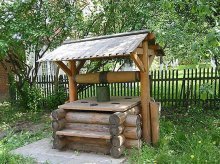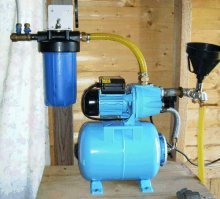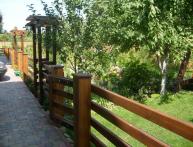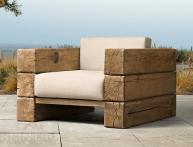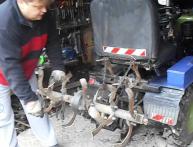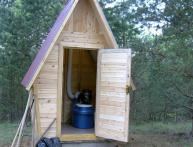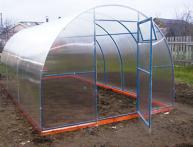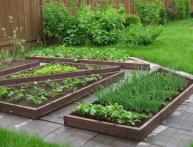Do-it-yourself water supply for a dacha: types of wells and their choice
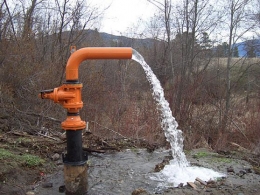
Today, the presence of running water in a country house plays an important role in the life of any summer resident. After completing the work, you feel the urge to take a shower or simply wash your hands. In addition, for a long stay it is necessary to constantly prepare food. All this requires running water. To carry out autonomous water supply to a country house, it is necessary to correctly develop a water supply system, find a water source and select pumps.
Content:
Types of wells
There are several types of water wells, each of which has its own pros and cons:
- Mine well. A mine-type well requires a lot of labor, although it significantly saves money on the construction of the well. It is quite possible to dig a hole for a mine well on your own. However, even if the hole was dug independently without the use of special equipment, then in the future you cannot do without its help; equipment will be needed to install concrete rings in the prepared hole. The positive aspects of this type of source: if the need arises, independently carry out repair work, carry out cleaning and disinfection measures.
- Abyssinian well (driving). To construct the structure of this type of well, a steel pipe is drilled into the ground. The pipe is inserted into the earth layers until it reaches artesian waters. The lower end of the pipe is equipped with a special filter and a head with holes. Through the holes, water resources enter the cavity through the pipe of the structure, from where they are pumped for consumption. The service life of such a well is not too long, and the cost is quite decent. An undeniable advantage of this type of water source is its ability to maintain the purity of water, because the water in it does not stagnate or become polluted.
- Well chamber. A well chamber is installed in cases where people permanently live in a country house, which is not uncommon today. The well chamber can easily be built with your own hands, using ring-shaped concrete structures or blocks with the maximum degree of waterproofing protection. The chamber must be covered with a lid to prevent precipitation from entering inside.
- Bore well. A bore well (artesian well) is a well that is drilled until it reaches groundwater. To drill a well, special equipment is used, since it is not possible to drill a well of such depth by hand. After drilling 7-8 meters into the clay, a water pipe with a diameter of 115 mm is installed into it.
What should you choose?
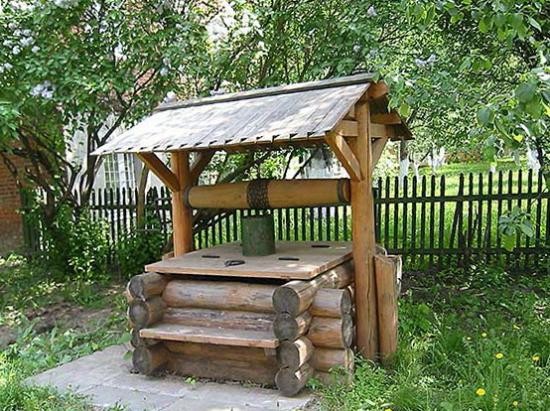
First of all, to install a water supply system, you should consider what water source will be used. In summer cottages, two types of wells are widely used for water supply: artesian and mine-type wells.
Artesian well
It is a deep well, sometimes reaching up to 200 meters, which reaches artesian waters. Water fills the well cavity through the internal pressure of groundwater, and is located at ground level or a little lower.
The positive aspects of an artesian well include: the produced water is environmentally friendly, so there is no need to install water filters, and the service life is more than 100 years.
The most suitable place for drilling an artesian well is the basement, but it is important to remember that it is necessary to make this type of well before building the basement floors.
Along with its advantages, an artesian well has its disadvantages: high cash costs for its registration, this is due to the fact that drilling an artesian well cannot be done without the help of specialists. In addition, when constructing an artesian well, additional documentation will be required.
Mine well
A shaft well is the cheapest solution to the problem of water supply to a site. If you consider that you can dig a well yourself, this allows the summer resident to further save his savings on the water supply of the site.
The advantages of a well include: its low cost, ease of arrangement and ease of use. If the upper part of the well is well insulated, then the water can be used not only in summer, but also in winter.
Negative aspects of a shaft well: the upper water layer in the well is usually contaminated, so the installation of water filters is required, which incur additional maintenance costs. It is necessary to build a kind of protective “house” at the top of the well to prevent precipitation from entering the water.
Water pump selection
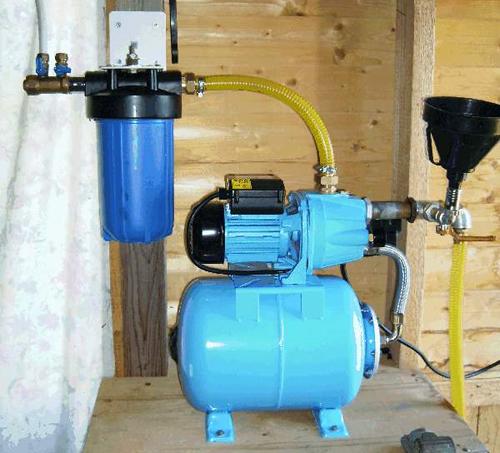
The next step is to select a pump for uninterrupted supply of water resources to consumers from the well.If a decision was made to build an artesian well, then a borehole pump is required, and when constructing a shaft well, a submersible pump is needed:
- Borehole pump. Borehole pumps are designed to lift and supply water resources from wells, the depth of which can reach 40 meters. When choosing a well pump, you should know the depth of your well structure and your need for water resources. It is recommended to purchase pumps of this type in such a way as to prevent the device from running idle, that is, the pump should supply water as much as it will be used. The compact dimensions of borehole pumps allow water to be supplied even from very narrow wells.
- Submersible pump. Direct installation of this type of pump is not required; it can be lowered into the well using ordinary string, at a level of approximately one meter from the bottom of the tank. Some models of submersible pumps are equipped with a base that allows you to install the device on a clean well bottom. The main advantages of submersible pumps include: low sensitivity to water quality, natural cooling during operation, low amount of noise produced and no need for maintenance.
For the right choice pump, regardless of the type of well constructed, it is necessary to take into account its performance, which should be sufficient to supply the required amount of water.
When calculating the required amount of water, the following is taken into account: the consumption of water-consuming equipment, in kitchen taps, in the bathroom or shower and the consumption of water for watering the garden plot.
Pumps with a capacity of 2-4 m3/hour are considered the most acceptable.This pump power is enough to provide water supply to seven out of four people, taking into account the consumption of water resources in the bathroom, washing machine, kitchen and garden plot.
Provided that living at the dacha will be year-round, and therefore the water supply will be used not only in summer, but also in winter, then water pipes should be laid in trenches. The depth of the trench should be slightly greater than the freezing depth of the soil. The trench is located from the source of water resources to the house where its consumption will be made.
At the height of the pipe, a hole is made in the well ring. To prevent the pipe from freezing, the place where it cuts into the well ring should be carefully insulated.
Instructions for organizing water supply at your dacha on video:
Interesting information about the vegetable garden

